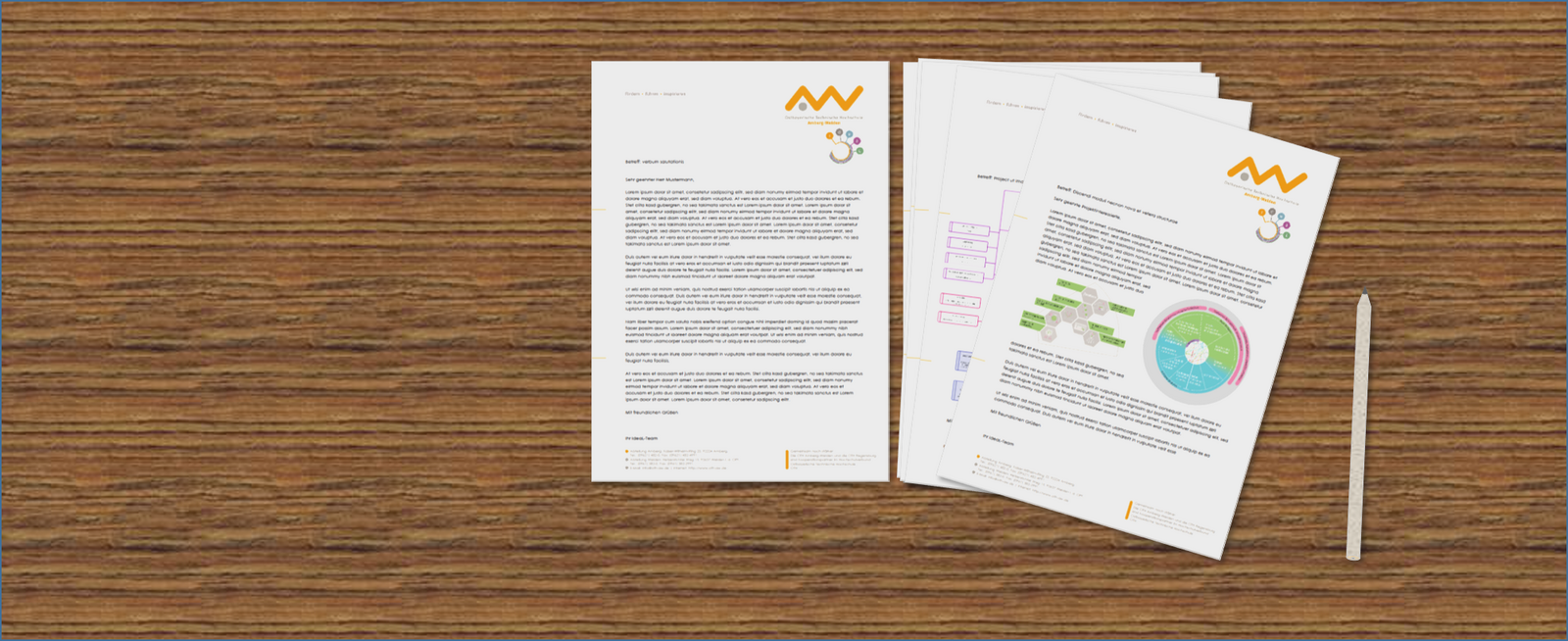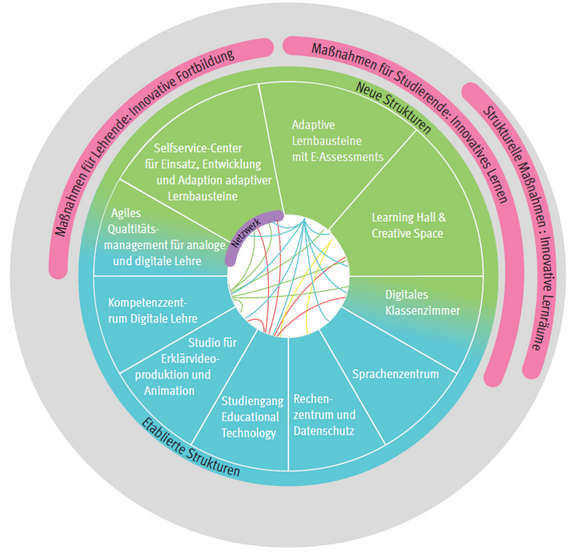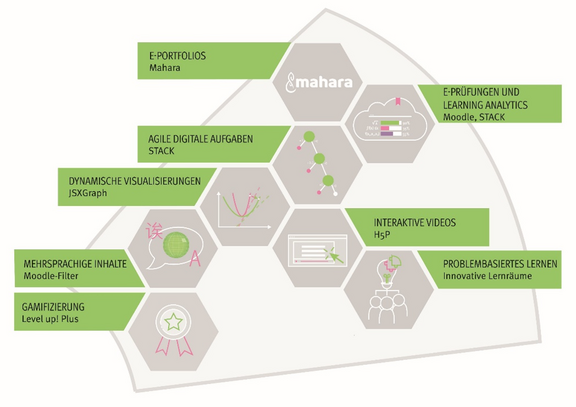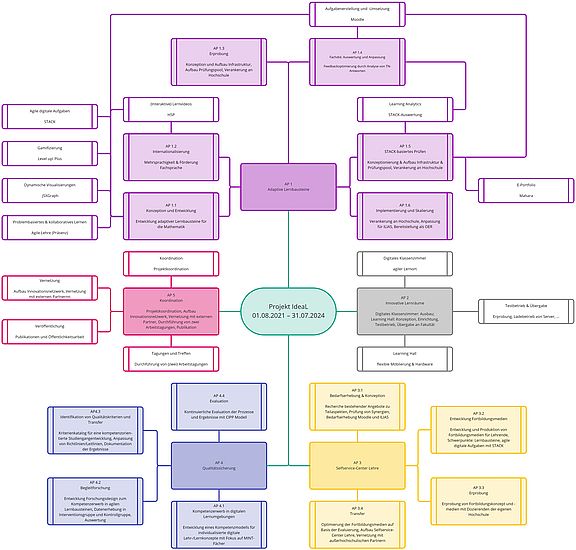Project content
Work packages
The course of the project is divided into three main phases: In the first phase, the adaptive learning modules will be developed for students and the innovative learning spaces will be set up and expanded. In a second phase, the developed modules are tested and the focus of the development shifts to further training offers for teachers. In the last phase, the developed offers are anchored in the university structures and made available to the national and European higher education area. The structures of the IdeaL network, which will be newly created or expanded within the framework of the project, are shown as green sectors in Figure 1. To achieve the objectives, the project is divided into five work packages. These are structured as follows:
Work package 1 is the content bracket on which the other work packages are built and which links them together. As indicated in Figure 2, the first step is to design and develop the adaptive learning modules, including measures to support international students (link to WP2 and WP3). Above all, the contents of a typical basic lecture such as "Engineering Mathematics I" are covered. It will be tested in the module "Mathematics for Engineers I" at the Faculty of Mechanical Engineering/Environmental Technology. The results are evaluated in the control group design (link to WP4). Based on the piloting, the learning modules will be didactically optimised and feedback options further differentiated (link to WP3 and WP4). In addition, an examination pool and the necessary infrastructure for STACK-based examinations will be established. Finally, the offer will be anchored at the university and the products made available as OER. In this phase, adjustments will also be made for the ILIAS learning platform (connection to AP3 and AP5). To meet the criteria listed above, various didactic elements are anchored in the development of the adaptive learning modules (Figure 3).
In work package 2, the innovative learning spaces of the digital classroom and the learning hall will be developed and set up (Figure 4). In the case of the Learning Hall, a test run is planned in addition to conception, awarding of contracts and installation. Subsequently, it will be handed over to the laboratory operations of the Faculty of Electrical Engineering, Media and Computer Science. Connections exist above all to WP1 (testing) and WP3 (training on digital possibilities).
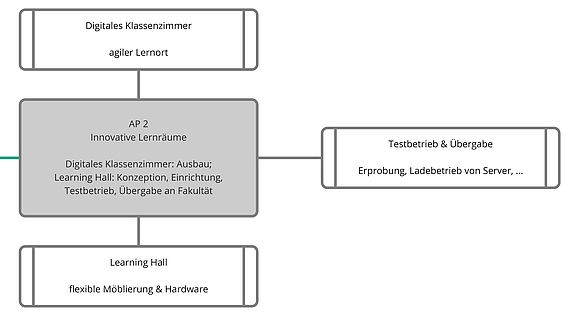
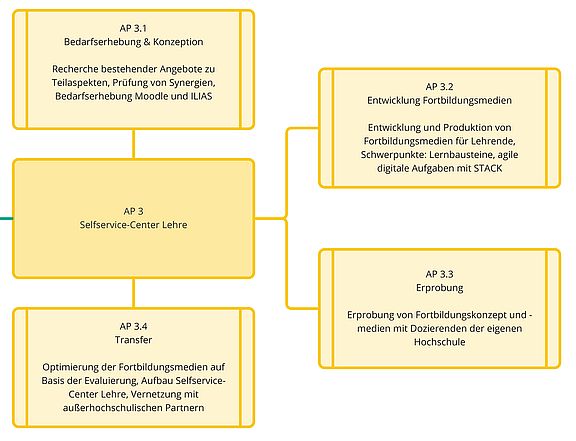
In work package 3, measures for counselling and further training of teachers are developed (Figure 5). After a phase of needs assessment and conceptual design, learning media for the Self-Service Centre Teaching will be developed, piloted and optimised on the basis of the evaluation. For a sustainable transfer, the Self-Service Centre Teaching will be anchored at the „Competence Centre Digital Teaching” and networked with partners such as the ILI. There are links to WP1 (requirements and possibilities of digitally supported teaching), WP2 (digital possibilities of innovative teaching spaces) and WP4 (quality assurance).
Figure 6 on the right shows work package 4, in which a competence model adapted for individualised digital teaching/learning scenarios in the STEM field is initially developed on a theoretical basis for quality assurance and anchoring the offers in the university structures. The model will be tested and adapted through the evaluation and research of the pilot and will serve as a basis for identifying quality criteria for competence-oriented study programme development. In parallel, the measures of work packages 1 to 3 will be continuously evaluated with the CIPP model.
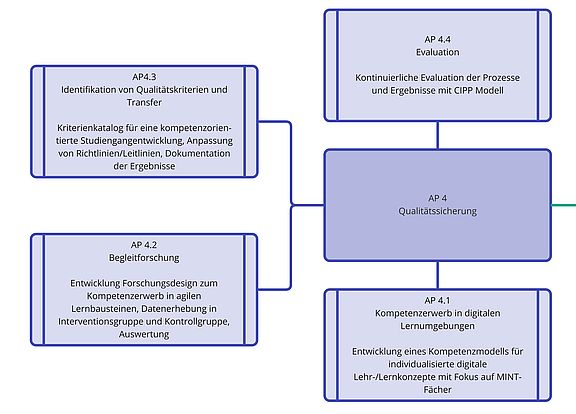
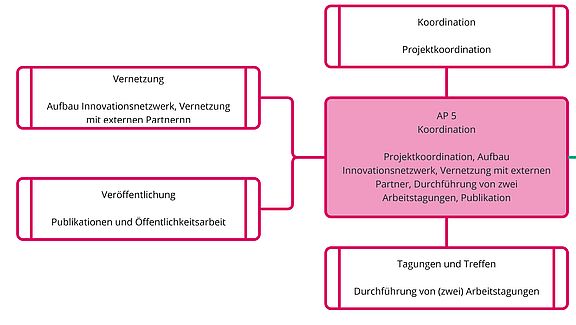
Work package 5 includes project coordination (time, personnel and budget management as well as reporting), the establishment of the innovation network for digital adaptive teaching and networking with cooperation partners from the internal and external university landscape. For this purpose, two workshops are expected to be held at the OTH AW: One with the focus on development and testing of adaptive digital learning environments and another with the focus on transfer. In addition, the project coordination will contribute to making the project results from work packages 1 to 4 visible through conference contributions and publications (Figure 7).
